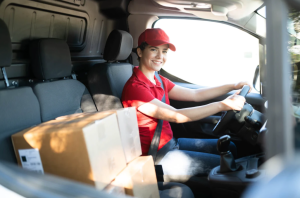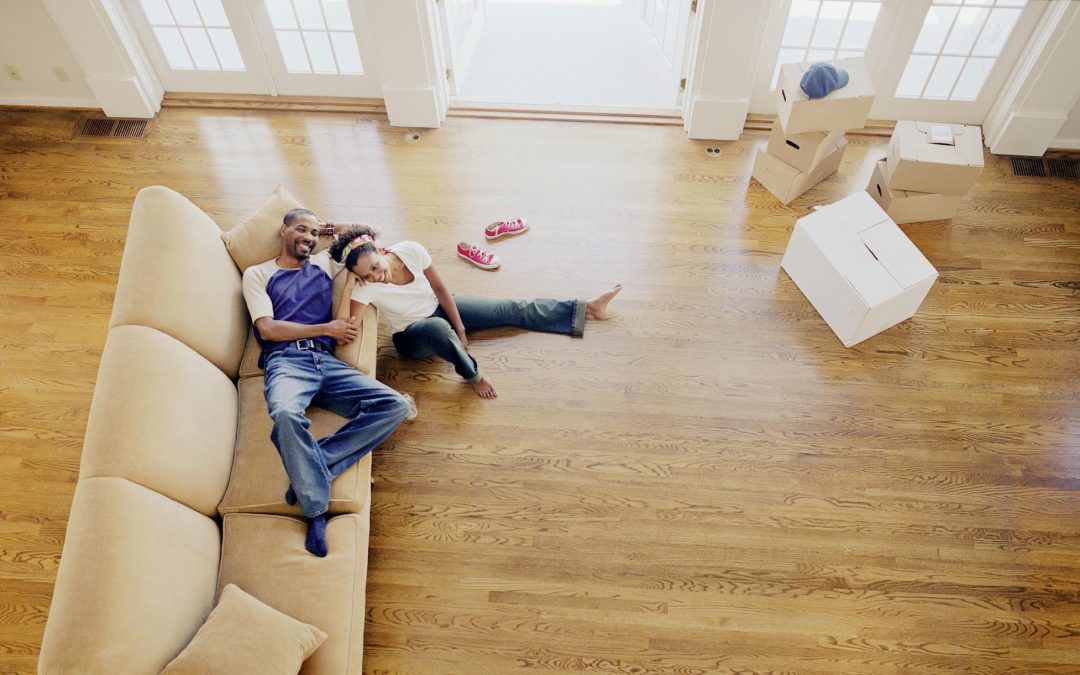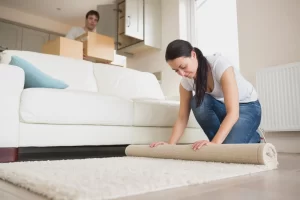Relocating to a new home can be an exciting journey, but it can also present certain difficulties, particularly when it comes to protecting your floors.
It’s imperative to take precautions to protect your flooring during the moving process, whether it’s hardwood, tile, laminate, or carpet.
It will not only assist in maintaining the quality of your flooring, but it will also prevent future needless repair expenses.
Here are some practical moving tactics and pointers to have in mind to make sure your floors remain spotless throughout the hectic moving period:
1. Take a Clean Slate to Begin:
It’s crucial to prepare your floors for moving day by cleaning them thoroughly.
When furniture and boxes are carried across dust, dirt, and debris, they can serve as abrasives and leave scratches or marks.
Make sure your floors are immaculate before the move by using the proper cleaning techniques, such as vacuuming, mopping, or sweeping, depending on the kind of flooring.
2. Purchase Superior Floor Protectors:
Using floor protectors is one of the best ways to safeguard your flooring during relocation.
These protective materials such as cardboard sheets, plastic sliders, and felt pads are easily available. For protection against dents, dings, and scratches, place these guards underneath large furniture and appliances.
Make certain that every furniture piece is sufficiently covered with appropriate material.
3. Make Use of Runners and Area Rugs:
Area rugs and runners, if placed well might serve as a buffer between your delicate flooring and high foot activity.
Place these rugs in doorways, hallways, and high-traffic areas to mitigate the effects of continuous movement.
Choose carpets that are long-lasting, not slippery, and capable of bearing the additional stress of moving.
In addition to protecting your floors, this will give movers a safer route and avert any mishaps.
4. Put Furniture Sliders:
Furniture slides can greatly streamline the procedure when handling large or heavy furniture.
The purpose of these sliders is to lessen friction between the furniture and the floor, facilitating the safe and easy movement of large, heavy objects.
To glide furniture over the floor with the least amount of effort, just position the sliders under the legs or corners of the furniture.
5. Secure Packing Materials:
It’s essential to securely pack your belongings if you want to avoid damaging your floors.
Duct tape should not be applied straight to the floor as it may leave a sticky residue or discolour the surface.
Instead, use specialised floor-friendly tape or painter’s tape to hold protective items like bubble wrap or cardboard in place.
6. Disassemble Furniture:

Larger furniture items including beds, tables, and shelves, can be disassembled to facilitate moving and decrease the possibility of causing harm to the floor.
Take care when disassembling these things, and package each part tightly to avoid unintentional scratches or dents.
To facilitate simple reassembly at your new site, store any minor pieces, such as screws and bolts, in labelled bags.
7. Employ Safe Lifting Methods:
Urge assistants and movers to lift objects safely to prevent dragging bulky objects across the floor.
Not only may dragging furniture tear up the floor, but it can also put a strain on the movers’ muscles.
Wherever possible, urge children to lift and carry objects; for larger items, utilise hand trucks and furniture dollies.
8. Take Temporary Flooring Into Account:
Use temporary floor coverings, such as protective floor paper or adhesive plastic films, if you expect a lot of foot activity during the transfer.
These coverings offer an extra line of protection against potential damage such as spills and scratches.
Make sure the coverings are easily removed without leaving any residue behind and that they are firmly fastened to the floor.
9. Plan the Moving Route:

Before the moving day, plan out the most efficient and floor-friendly route for moving large items.
Identify any potential obstacles, such as narrow hallways or sharp turns, and strategize how to navigate through these areas without causing any damage to the floors or the furniture.
Clear any clutter or obstacles along the way to create a smooth and safe path for the movers.
10. Schedule Professional Floor Maintenance:
After completing the move, consider scheduling professional floor maintenance to assess any potential damage and address any scratches or marks that may have occurred during the process.
Professional cleaners and floor maintenance experts can provide deep cleaning, resealing, or refinishing services to restore your floors to their original condition.
Small things to keep in mind which we often forget:
- Box Labelling and Arrangement: Carefully labelling and arranging boxes helps expedite the moving process and lower the possibility of inadvertent knocks or scrapes on the floor. Make sure that crates containing delicate products are clearly labelled so that extra care is used when transporting them.
- Clear Pathways and entrances: Removing clutter and obstructions from pathways and entrances can reduce the risk of trips and falls and also decreases the possibility of inadvertent damage to your floors and possessions. Remove anything superfluous from these spaces to allow for easy mobility throughout the relocation process.
- Protect Corners and Edges: Utilize corner guards and edge protectors to shield vulnerable areas of your walls and floors from accidental bumps or scrapes. These protective materials can absorb the impact of any potential collisions during the moving process, safeguarding both your flooring and the structural integrity of your new home.
- Interact with the Moving staff: Maintaining the safety of your floors depends on having effective communication with the moving staff. Give explicit directions for any places that need to be moved with extra care or attention. To avoid any potential miscommunications or mishaps, promote open communication and quickly resolve any issues.
- Prioritise Safety Measures: By taking precautions like wearing protective clothing and employing safe lifting procedures, you may drastically lower the chance of injuries to the movers and damage to your floors. It is recommended to use gloves and non-slip shoes during the journey to maintain a firm grip and avoid any unintentional slips or falls.
- Monitor Weather Conditions: If you are moving during inclement weather, take extra precautions to protect your floors from mud, water, or snow. Lay down protective coverings or mats at the entry points to prevent the tracking of moisture or debris into your new home, keeping your floors clean and dry throughout the moving process.
Summing Up
In conclusion, protecting your floors during a move requires careful planning, the right tools, and a proactive approach.
By implementing these effective strategies and tips, you can safeguard your floors and minimize the risk of damage, ensuring that your new house remains a pristine and welcoming space for years to come.
Take the necessary precautions, communicate effectively with the movers, and prioritize floor protection to enjoy a seamless and stress-free moving experience.
Frequently Asked Questions
How can I keep my hardwood flooring safe when moving?
To avoid dents and scratches, use felt cushions or furniture sliders below bulky items and think about using protective coverings.
When relocating, what is the best strategy to safeguard carpeted floors?
To preserve the carpet from stains, filth, and damage, cover it with heavy-duty cardboard sheets or plastic film protectors.
In order to protect my floors during a move, should I use area rugs?
Yes, area rugs positioned thoughtfully can reduce the effects of excessive foot traffic and serve as a barrier against scratches.
How to protect my tile floor when moving?
Protect the tiles from possible chips, cracks, and scratches from heavy objects by covering them with cardboard or specialised tile mats.
Is it okay to attach safety materials to the floor with ordinary tape?
Painter’s tape or floor-friendly tape works better to prevent sticky residue buildup and surface harm to the floor.
What should I do if I accidentally spill something on the floor during the move?
Immediately wipe up spills to avoid damage or stains and think about applying a protective covering to reduce the possibility of more mishaps.
I want to protect the floors; therefore should I disassemble the furniture before moving?
Disassembling larger furniture items can help avoid unintentional scuffs and facilitate a more seamless and controllable moving experience.
How can I move big objects without scuffing the floor?
To lower the risk of dragging heavy objects across the floor, promote the use of safe lifting procedures and provide furniture sliders or dollies.
After moving, is it still necessary to employ a professional floor cleaner?
Although it’s not required, hiring a professional floor care provider can assist in identifying and resolving any damage or stains left behind during the relocation process.
What are some cost-effective ways to protect floors during a move?
Using materials like blankets, towels, or even old rugs as makeshift protectors can provide a budget-friendly solution to safeguarding your floors during the move.
How do i protect my carpet from builders?
To protect your carpet from builders, consider using temporary carpet protection film or plastic sheeting to shield it from dirt, debris, and potential spills. Additionally, communicate clear guidelines to the builders regarding the designated pathways and areas where they should refrain from walking to minimize the risk of accidental damage
What do movers use to protect floors?
Movers often use various protective materials such as furniture blankets, cardboard, plastic sliders, and adhesive plastic films to safeguard floors from scratches, dents, and other potential damage during the moving process. They may also employ specialized floor coverings and runners to create a safe path for transporting items while minimizing the impact on the flooring.




